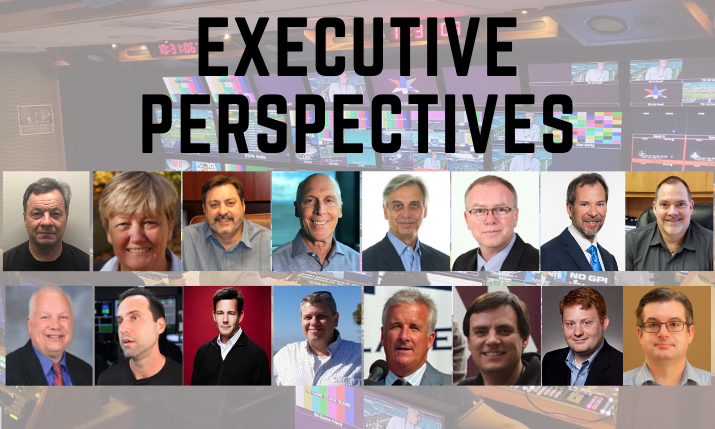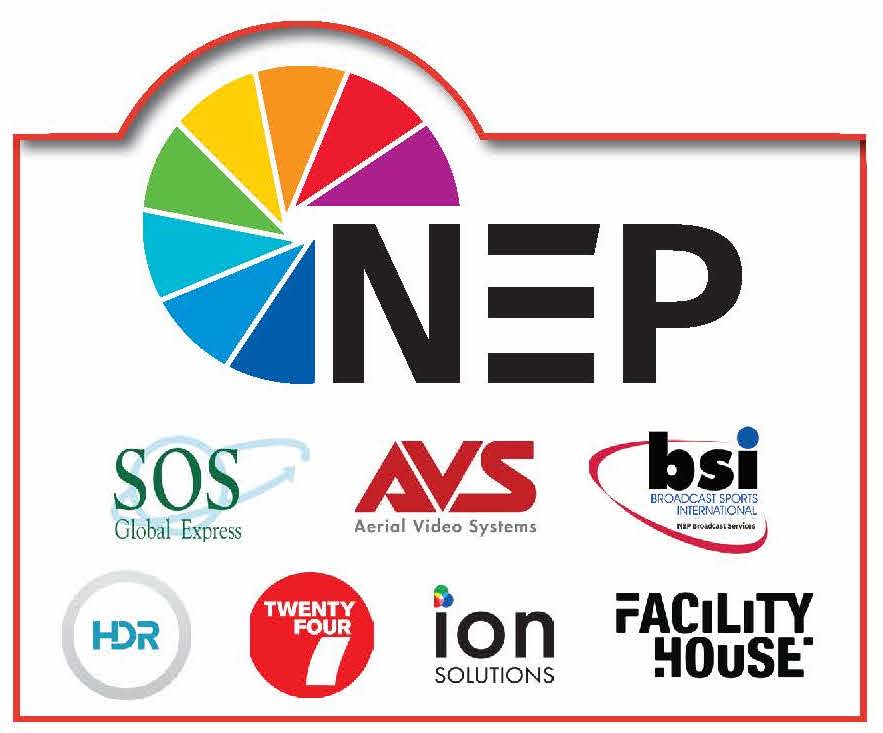2020 Executive Perspectives, Part 1: Mobile-Production Leaders Sound Off on the State of the Business
At-home/REMI workflows, esports, consolidation are major issues
Story Highlights
The mobile-production business is booming, with more live sports productions last year than ever before. But truck providers face a host of challenges when it comes to next-gen technology and their bottom line. They are being asked to deliver more for less as clients look to trim production costs and explore new at-home–production workflows. SVG sat down with a dozen industry leaders to discuss the current state of the business and where they see it headed in the coming years.
Here are the executives we spoke with:
- Donald Adydan, F&F Productions
- Mary Ellen Carlyle, Dome Productions
- Len Chase, CSP Mobile Productions
- Philip Garvin, Mobile TV Group
- Michael Harabin, Gravity Media
- Mike Johnson, Dome Productions
- Glen Levine, NEP Group
- Marc Orgera, F&F Productions
- Chris Priess, Mediapro
- Mitch Rubenstein, Ross Mobile Productions
- Brad Sexton, Live Media Group
- Chad Snyder, Lyon Video
- Pat Sullivan, Game Creek Video
- Jason Taubman, Game Creek Video
- Dan Turk, NEP Group
- Peter Wehner, Mobile TV Group
The responses below were submitted in Q4 2019 for this year’s SVG Mobile Production Yearbook and cover the business and commercial issues. CLICK HERE for Part 2 of Executive Perspectives, focused on the state of mobile-production technology.
Do you consider the current state of the remote-production business healthy? Why? What is your forecast for the market over the next 12 months?
Carlyle: We think 2020 is going to be a good year in terms of events. We don’t see a huge growth, but we see maintaining our growth so we’re happy with it. Our 18 trucks are keeping busy, and there are a few more events. We’ve scored some contracts, which helps us out. We don’t see it as a down fall; it’s a healthy business.
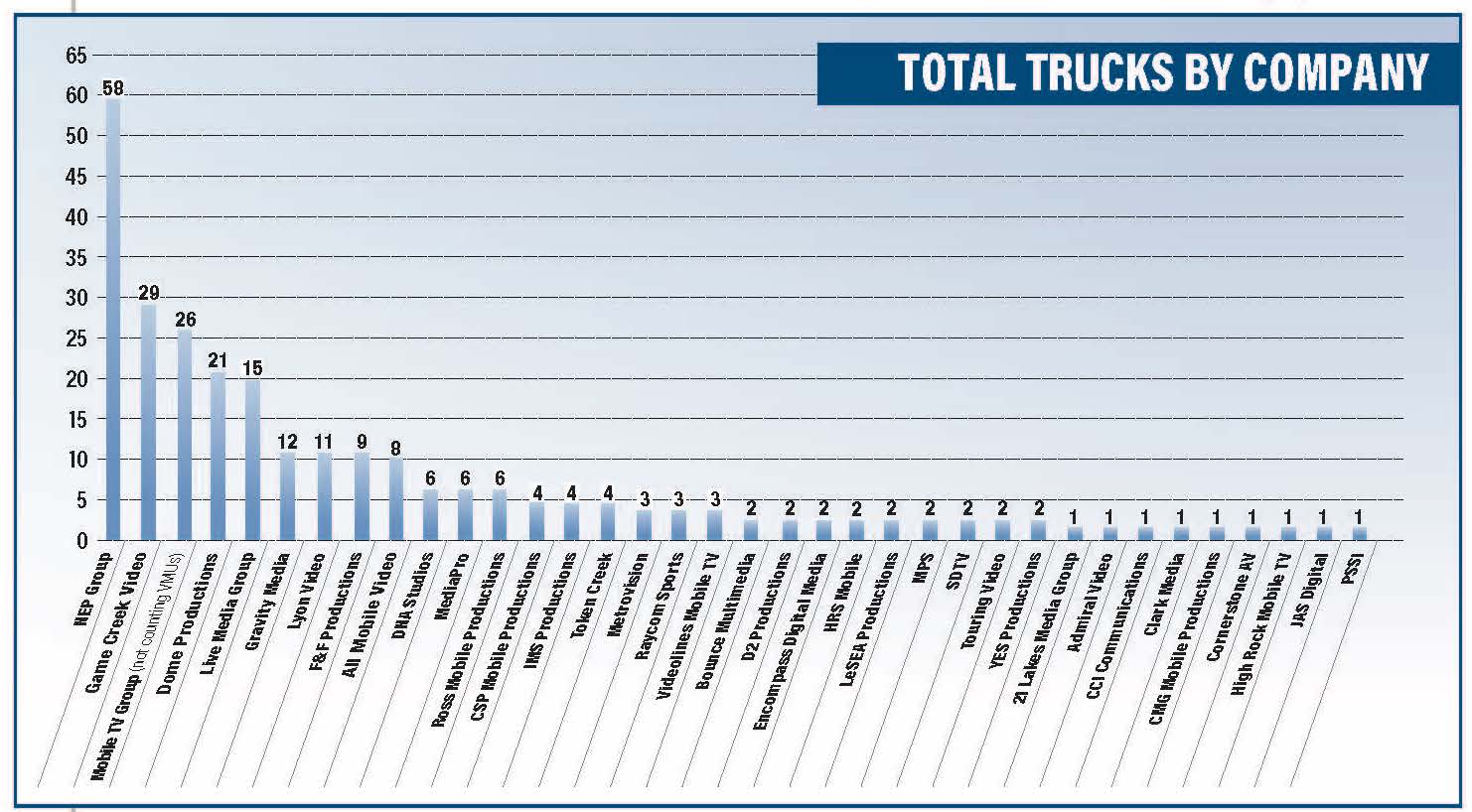 Chase: The remote-production business continues to be healthy and evolving. We are resolved in staying with the latest trends as sports content continues to expand. We are expecting growth along with that over the next 12-24 months.
Chase: The remote-production business continues to be healthy and evolving. We are resolved in staying with the latest trends as sports content continues to expand. We are expecting growth along with that over the next 12-24 months.
Garvin: Yes. There is competition and innovation happening in the remote-production business, and that is a good thing. New technology offers opportunities and challenges while our clients are receiving more value.
Harabin: In terms of the number of events being produced using this model, yes, I think the remote-production business is fine. I think we’ll see some growth as companies that have been sitting on the sidelines start to deploy the model.
Levine: Yes, the business is healthy, and it is evolving. We continue to work with our clients and suppliers to create integrated solutions that allow for efficiencies in the broadcast compound. A number of the major sports-rights [packages will be finalized], setting the stage for technology upgrades in 2021 and beyond.
Orgera: Healthy but very transitional. There are tremendous changes in technology that evolve every day. Clients have a higher demand for 4K HDR while also expressing a desire to have lower prices. It’s a difficult situation to manage at times and remain competitive in the industry. Timing is crucial for the capital investment for the equipment and engineering resources.
Priess: We have experienced significant increases in revenue this past year, given our expanded mobile fleet, our ability to provide 4K facilities, and the growing REMI market. With our strategic partnerships and our expanded services, there is no doubt we will have strong growth going forward.
Rubenstein: I think the remote-production business is healthy because … consumers are demanding live content more than ever. The need for cost-effective solutions to give it to them is in demand. More networks and online platforms continue to recognize that demand and turn to companies like Ross Mobile. In the next 12 months, needs of the networks will continue to scale to match consumer demand.
Snyder: The remote-production industry is healthy and growing.
Sullivan: The business seems to be healthy. Lots of content that needs to go on-air somewhere.
Sexton: Yes, because the market is continuing to change with different opportunities for us as a company. If we continue to adapt to market changes, we will continue to prosper. We see more need for technological advancement in mobile units, while maintaining a competitive cost structure. 1080p and IP will continue to gain traction over the next year.
As at-home/REMI productions become more popular, what is the effect on your business?
Carlyle: We haven’t seen any growth in REMI. We’ve seen it staying the same. We do AHL and CHL broadcasts, and we do some ESPN REMIs, but it hasn’t really hit our market.
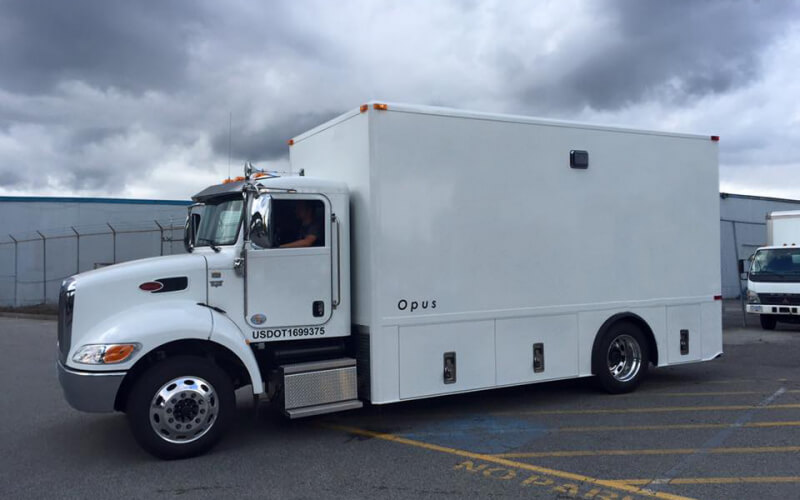
Gravity Media’s Opus mobile unit is designed specifically to support “At Home” control room productions.
Chase: It continues to change our business’s dynamics. We have seen an increase in the number of at-home/REMI productions for college-level events, which have provided interesting opportunities for us in the full-truck production events as well. Different clients have different approaches and attitudes to at-home/REMI, and we remain flexible and nimble to meet those requests.
Garvin: At-home is a term that fails to describe the variety of options available to our clients. With our 4,000 live events a year, there are dozens of ways to make live TV. In some cases, when resources are already centralized and keeping crew costs low is paramount, what many think of as “at-home” production makes total sense. Other times, keeping people onsite in a mobile unit and remoting in more resources to deliver higher quality is the best solution. We offer both of these as well as traditional mobile-unit services.
Harabin: Gravity Media has provided engineering, mobile units, and general institutional knowledge of the workflow on over 2,000 REMI productions. We are leveraging our leadership position in the REMI space by focusing on two things: 1) perfecting the existing workflow to deliver more value to our clients and 2) designing the next-gen REMI/at-home/home-run production model.
Levine: Currently, it has minimal effect since we are already involved with REMI productions. There is a need, and investments are being made in building powerful, versatile single-truck units that can streamline workflows but be flexible enough to scale up to support midsize and large events.
Orgera: We provide services to our clients, and REMI [workflows] have become a part of how some productions are produced. We will continue to support our clients in every way possible.
Priess: It is considerable. We are investing in both the transmission infrastructure and the production facilities dedicated to REMI productions. We just completed our new dedicated REMI control room, upgraded all our in-house transmission capabilities, and have our first remote truck for this market arriving this spring.
Sullivan: We do what our customers ask. If they want REMI/home run, we give them REMI/home run. If they want a professional or collegiate championship, we can do that as well.
Sexton: At-home, or REMI, productions will have a minimal effect on our business. We are positioning ourselves to handle that need as it becomes necessary. The only negative affect could be a lower-than-normal truck revenue per show.
Do you see esports production as an important part of the business going forward?
Chase: While esports is a very hot trend at the moment and will continue to be a part of our business, it is still too early to label it “the largest potential for growth.”
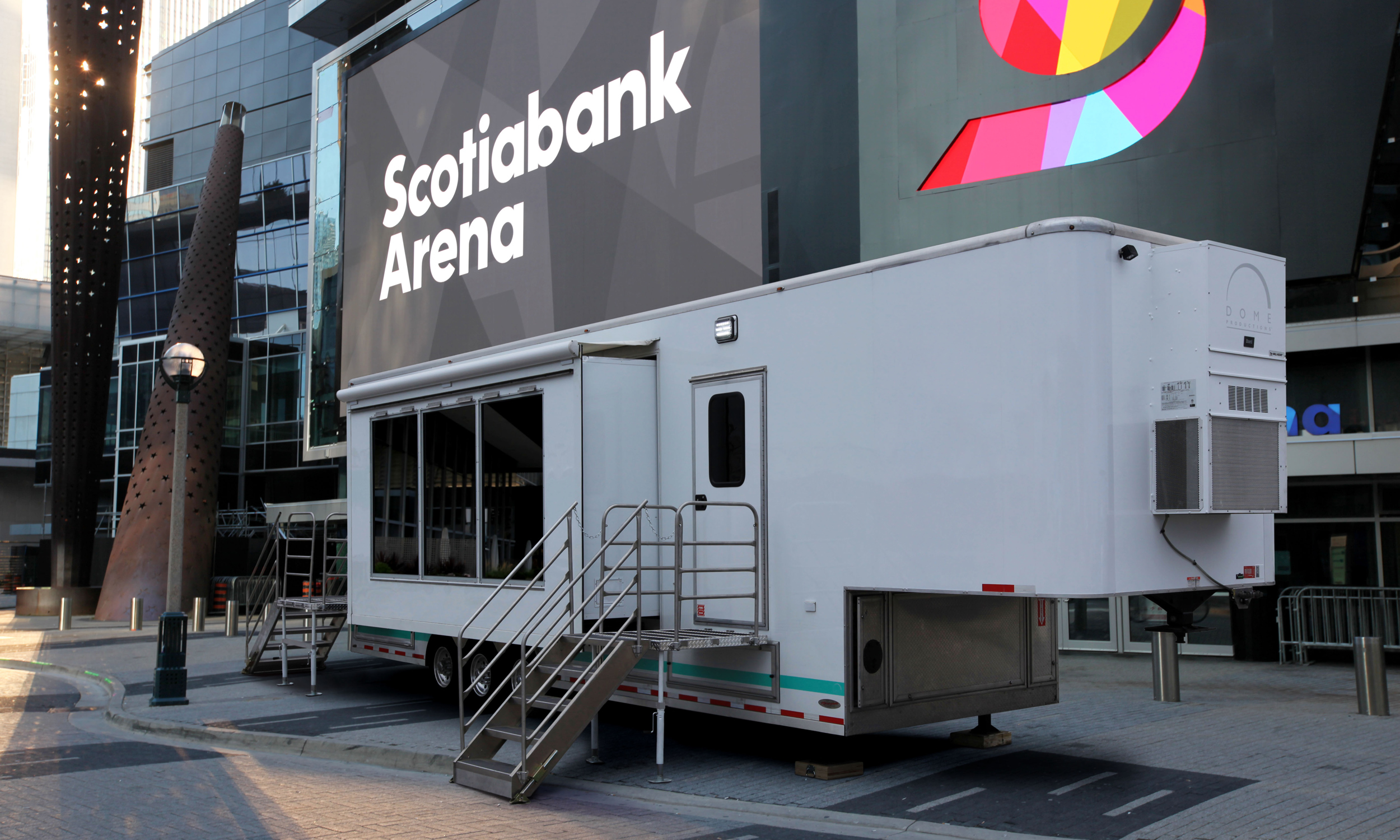
Dome Productions’ new Showcase mobile unit recently rolled out at the NHL All-Star Game in San Jose, CA, producing a live NHL 19 esports event onsite.
Orgera: Esports is a growing part of our business, and we look forward to building the brands with our clients.
Priess: We have been involved with esports for the past two years, providing production facilities for a daily gaming series as well as competition coverage. There is no doubt to us that both esports and REMI productions will be the largest growth area.
Rubenstein: Ross Mobile has become one of the leading esports-production providers in the industry. A large portion of our business has become esports. We have native-1080p capabilities across our fleet of trucks and flypacks and the ability to [produce] turnkey graphics, workflows, AR, and every aspect of an esports production. RMP has provided some level of service on over 50 esports events this past year alone.
Snyder: Esports is an established portion of our business. Live streams are growing and becoming increasingly sophisticated.
Sexton: Esports remains a very important focus for us as an organization across the board. The needs of many partners require more than just a production-facilities provider, one that understands technology and the deliverables as well as the entertainment environment as a whole.
What impact do you believe recent industry consolidation has had on the business? Do you think this trend of consolidation will continue?
Carlyle: I think consolidation is definitely going to continue, whether it’s consolidation or companies dropping off, because, I think, the next leap in technology is a huge capital leap. The smaller vendors are really going to have a challenge. I also look at it as opportunity: since people don’t like to put all their eggs in one basket, it’s an opportunity for those companies that are not part of this consolidation. But time will tell.
Chase: Industry consolidation can limit clients’ choices and their ability to pursue competitive pricing and options. It can also make it difficult for smaller, startup vendors to survive. CSP has been around for 30 years because we continue to be nimble and lean from an organizational standpoint while providing top-quality engineering and equipment. However, consolidation will continue. More acquisitions and/or more strategic partnerships will also continue to form in order to compete against the larger companies, providing more unique opportunities.
Garvin: Too much consolidation can limit our clients’ choices, but the trend will continue as long as companies are willing to add debt.
Levine: I do think the industry will continue to see consolidation, especially as clients look for ways to streamline their operations and look for a single or small group of trusted providers that can deliver great service with an integrated set of solutions.
Orgera: It hurts the industry as a whole for both vendors and our mutual clients as it limits competition and stagnates the growth of businesses.
Rubenstein: Consolidation allows companies to better serve its customers. At Ross Mobile, we have all the best that Ross Video has to offer. We can offer any level of service at competitive prices. We support the needs of other, like companies in the industry, with the end goal and result always being to help the content providers and to better serve the viewers. Consolidation is vital to the industry to allow networks to thrive and continue to produce content in a budget-conscious marketplace.
Sullivan: Consolidation is not recent. It has been going on for the 26 years Game Creek has been in business. It shrinks the number of companies that compete for business but does not shrink the competitive nature of those companies.
Sexton: Consolidation can be both good and bad for any industry. It allows those companies that struggle financially or with growth to become part of a bigger organization that has the technological and financial resources to help them continue their success. On the negative side, when one company moves to acquire several support companies within our industry, it not only reduces competition but forces others to do business with their competitors.
Has the explosion of OTT and live-streaming content opened new business opportunities? Are your facilities working more streaming-only (that is, non–linear-broadcast) shows?
Carlyle: I’m waiting to see how over-the-top comes into the market. Is it going to end up being in the midsize trucks or in the little trucks? We see OTT having more content, and so that’s why we’ve put [our new truck] Showcase on the road. It’s a different revenue model.
Chase: OTT is definitely where the growth portion of our industry is evolving, particularly in the sector of international clients producing U.S. events.
Garvin: We are certainly working more OTT events than we have in the past. Multiple feeds is something we have been doing for a long time, but the total number of feeds continues to grow, demanding more resources and feeds from our mobile units.
Levine: We continue to see growth in secondary, streaming feeds from the main broadcasts, along with a number of clients broadcasting directly to OTT platforms. With the growth of NEP Media Solutions in the U.S. and specifically our Mediabank media-asset–management system, our clients can manage their content and set scheduled delivery to multiple OTT platforms in an efficient, streamlined process.
Orgera: Yes, we have seen growth in this area with our clients and welcome opportunities to help our clients grow their projects/business.
Priess: OneSoccer, the dedicated soccer-streaming platform in Canada, was recently launched and is certainly one of our largest clients. This season alone, we provided live coverage of 135 soccer games. While our primary clients are broadcast-sports–based, we have experienced a sharp increase in bookings for streaming services, such as Netflix, DAZN, and Twitch.
Rubenstein: Ross Mobile has grown considerably through the production of live-streaming content, especially in the areas of esports and supporting productions outside the U.S., doing shows in Mexico and Canada. We continue to offer solutions to many different providers.
Sullivan: Game Creek is doing more events for OTT and more live streaming, but I would hardly call it an “explosion.” Most of the streaming we currently do is in conjunction with one of our standard productions.
Sexton: Certainly. The broadcast ecosystem is changing daily with new technology offerings, which can afford more opportunity, especially for companies that have addressed the streaming/OTT world as a new medium that is growing year over year.
Outside of technological challenges, what are your biggest commercial (or government-regulation–related) concerns today?
Carlyle: I’d say a big part of it is training and the aging freelance market. That’s a challenge that has to be overcome, and we’ve taken that on.
Harabin: On the business side, vendors of other production services or even hardware manufacturers are becoming service providers for REMI productions.
Levine: Staying on top of costs is always a top concern. Working with our clients as a partner allows us to look for cost-efficient solutions to their needs, and that helps keep the business sustainable.
Priess: Some client budgets are either stagnant or shrinking due to decreased viewership on traditional platforms. This is requiring us to do more with less — a real challenge at times to maintain the caliber of the production and meet viewer expectations when revenues don’t always justify it.
Snyder: Chinese tariffs have certainly added to equipment costs. When and if they are removed, I do not see an immediate return to the prior costs. Our government seems to be interested in tariffs on goods from other regions; this could cause additional cost escalation.
Sullivan: Hiring and retaining effective engineers and drivers. Finding trained personnel at every level of our productions is the biggest concern facing our industry.
Sexton: We continue to stay on top of regulation around the international broadcast environment. And what keeps us up at night is the balancing of finances to ensure we keep up with technological advances, which you have to do to be competitive, while ensuring you have the internal infrastructure to support field operations.
What are the biggest opportunities for growth and future success?
Carlyle: Over-the-top and esports. We’re excited about that and the technology on over-the-top. Take it right from site to the app or the website, wherever you want to go. And I think esports has rejuvenated our [staff].
Chase: I believe standard changes to 1080p, 4K, and IP production are all opportunities for future growth and success. While we are seeing some of this today, it has a great potential for a much wider adoption in the future. 5G data transmission could very well be the change agent for this.
Garvin: We are eagerly testing and proving new ways to produce, create, and distribute live video. We are now able to provide ultimate flexibility and efficiency, but production is still a creative art: just because we can do something technologically doesn’t mean we should.
Levine: Opportunities for growth go hand in hand with partnering with our clients on integrated solutions. Working together to create ways to enhance the production and build efficiencies in the compound. Our success will still be measured by the talented engineering teams we have managing the systems.
Priess: Esports and REMI productions will be the stimulus to grow our market share. Our biggest challenges going forward are two-fold. The first is keeping up with the technical transitions, moving into the HDR and possible 8K world. The other is expanding our great team, finding the right people that are essential for our growth.
Rubenstein: We are continuing to pursue higher-level shows with cost-effective solutions. The majority of our facilities are now 1080p, and we are [exploring] more ways to add value to the end product. Future growth and success will come with the ability to scale to the demands of our customers. The cost of doing business keeps rising, so it forces us to get better and more effective in running our business.
Sullivan: The next several years will bring lots of transition as both regional- and national-rights agreements are negotiated. Future growth will result when it is apparent that the technology and systems we are developing now are the most efficient way for our customers to deliver compelling content to their customers.
Sexton: Growth and future success are dependent on being able to stay on top of technology trends and ahead of the curve, which are constantly changing, and LMGH is in a position to meet these challenges.
